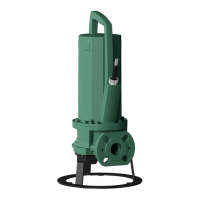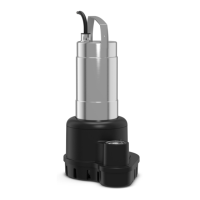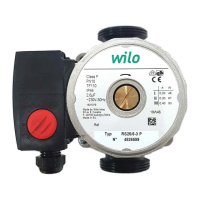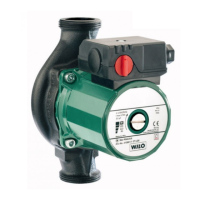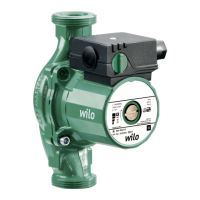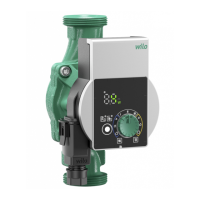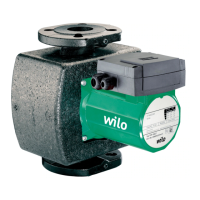Safety en-US
Installation and operating instructions Wilo-Rexa UNI 7
2.4 Monitoring devices
The following monitoring devices must be provided by
the customer:
Circuit breaker
The size of the circuit breaker corresponds to the rated
current of the pump. The shifting characteristics should
correspond to group B or C. Observe the locally applica-
ble regulations.
Motor protection switch
For products without a plug provided by the customer,
a motor protection switch must be provided on-site!
The minimum requirement is a thermal relay/motor
protection switch with temperature compensation, dif-
ferential triggering and an anti-reactivation device, in
accordance with local regulations. Further protection
devices (e.g. overvoltage-, undervoltage- or phase fail-
ure relay etc.) must be provided on-site for sensitive
power supplies.
Residual-current device (RCD)
Adhere to the regulations of the local energy supply
company! We recommend using a residual-current de-
vice (RCD).
If persons come into contact with the product and con-
ductive liquids, secure connection with a residual-cur-
rent device (RCD).
2.5 Use in fluids which are dangerous to health
When using the product in fluids which are dangerous
to health, there is a danger of bacterial infection! Thor-
oughly clean and disinfect the product after removal
and before further use. The operator must ensure the
following points:
▪When cleaning the product the following protective
equipment is made available and worn:
– Closed safety goggles
– Breathing mask
– Protective gloves
▪All persons are informed about the fluid, the danger re-
sulting from it and how to handle it!
2.6 Transport
▪The following protective equipment must be worn:
– Safety shoes
– Protective helmet (when using lifting equipment)
▪Always take hold of the product by the handle when
transporting. Never pull on the power supply cable!
▪Only use legally specified and permitted lifting gear.
▪Select lifting gear according to the present conditions
(weather, attachment point, load etc.).
▪Always attach lifting gear to the attachment points
(handle or lifting eye).
▪The standard safety of the lifting equipment must be
guaranteed during application.
▪When using lifting equipment, get a second person to
coordinate the procedure if necessary (e.g. blocked vis-
ibility).
▪Standing under suspended loads is not permitted. Do
not move suspended loads over working areas occu-
pied by people.
2.7 Installation/dismantling work
▪Wear the following protective equipment:
– Safety shoes
– Safety gloves against cutting injuries
– Protective helmet (when using lifting equipment)
▪At the operation site adhere to applicable laws and reg-
ulations for work safety and accident prevention.
▪Disconnect the product from the power supply and se-
cure against unauthorized switch-on.
▪All rotating parts must stop.
▪Ensure sufficient aeration in closed rooms.
▪When working in chambers and closed rooms a second
person must be present for safety reasons.
▪If toxic or suffocating gases build up, immediately initi-
ate countermeasures!
▪Clean product thoroughly. Disinfect products which
have been used in fluids which are dangerous to health!
▪Ensure that there is no danger of explosion during all
welding work or work with electrical devices.
2.8 During operation
▪Wear the following protective equipment:
– Safety shoes
– Hearing protection (according to the work regula-
tions notice)
▪Keep people out of the product's working area. There
must be no persons in the working area during opera-
tion.
▪The operator must inform his/her superior immediately
of any faults or irregularities.
▪If defects which are dangerous to health arise, an im-
mediate deactivation by the operator must be per-
formed:
– Breakdown of the safety and monitoring devices
– Damage to the housing components
– Damage to electrical equipment
▪Never reach into the suction ports. The rotating parts
can crush and sever limbs.
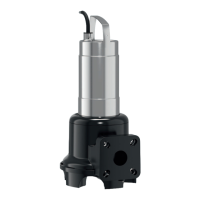
